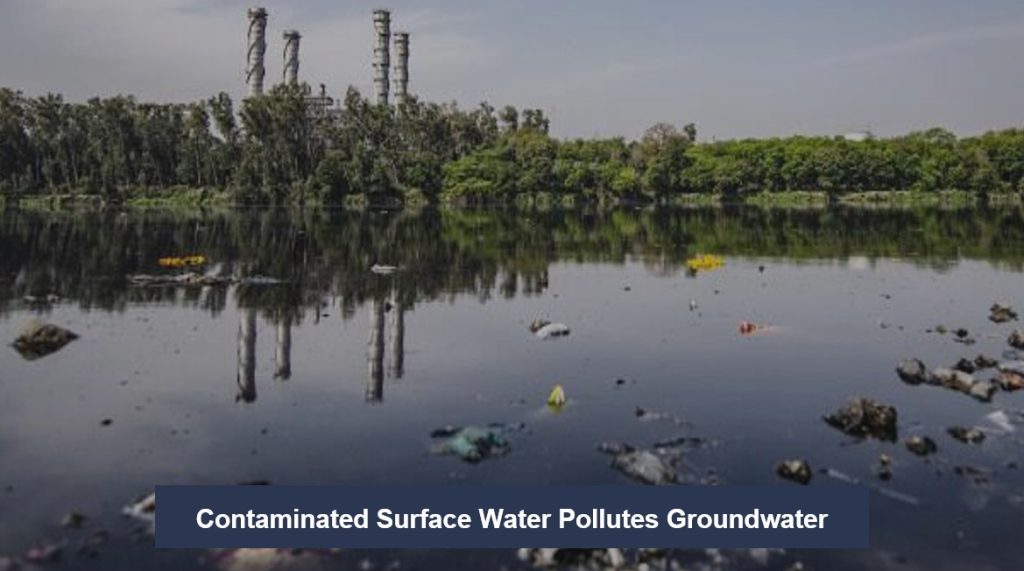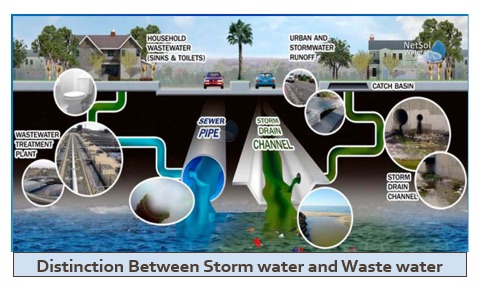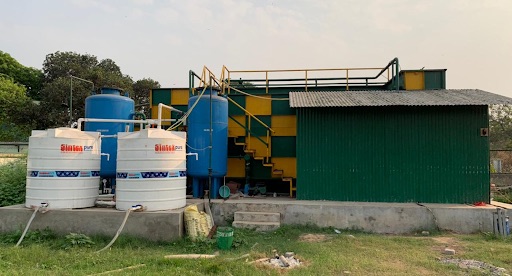Waste Water Treatment – An overview
Author – WIN Foundation
Waste-water management, and overview of challenges and opportunities:
Every human should have the idea of taking care of the environment, of nature, of water. So using too much or wasting water should have some kind of feeling or sense of concern. Some sort of responsibility and with that, a sense of discipline.” -Dalai Lama
Wastewater Management is an integral part of managing the water cycle effectively.
 Traditionally, the water cycle took care of the supply of fresh water to the living world on land, including its purification by natural means. However, increase in population and industries have led to huge increase in water demand and also created massive water pollution. Nature’s water cycle is grossly insufficient to meet these needs. This puts pressure on our water sources, while at the same time degrades them. Waste water management is a critical need, alongwith water conservation, to meet these challenges.
Traditionally, the water cycle took care of the supply of fresh water to the living world on land, including its purification by natural means. However, increase in population and industries have led to huge increase in water demand and also created massive water pollution. Nature’s water cycle is grossly insufficient to meet these needs. This puts pressure on our water sources, while at the same time degrades them. Waste water management is a critical need, alongwith water conservation, to meet these challenges.
Grossly inadequate wastewater management has led to stagnant water in our localities, leading to their contamination. In turn, such water has degraded a large number of our water bodies.
 A related problem is stormwater management, which manages the vast amount of water brought by rainfall during the monsoon months across the country. It is becoming increasingly clear that the current system of trying to collect and carry the stormwater over large distances is dysfunctional. Isn’t it ironical that, in most places, due to stagnation on ground for many hours or days, as well frequent mixing with sewage water, we manage to convert the pure rainwater given by nature into contaminated and polluted water and then we add it to our water bodies? We are all aware of the diseases this brings on every monsoon. The solution is actually available in the Rainwater Harvesting technology. RWH systems have been traditionally used over centuries, and modern adaptations can easily enable us to use such systems to collect a major part of rainwater from roof as well as surface and recharge groundwater. In addition to the well known increase in water availability, RWH is a better way of managing “stormwater”, before it becomes dirty. RWH systems can vastly reduce the water overflow on ground, and thus reduce the substantial stormwater drain capital and operational expenses of our local government bodies.
A related problem is stormwater management, which manages the vast amount of water brought by rainfall during the monsoon months across the country. It is becoming increasingly clear that the current system of trying to collect and carry the stormwater over large distances is dysfunctional. Isn’t it ironical that, in most places, due to stagnation on ground for many hours or days, as well frequent mixing with sewage water, we manage to convert the pure rainwater given by nature into contaminated and polluted water and then we add it to our water bodies? We are all aware of the diseases this brings on every monsoon. The solution is actually available in the Rainwater Harvesting technology. RWH systems have been traditionally used over centuries, and modern adaptations can easily enable us to use such systems to collect a major part of rainwater from roof as well as surface and recharge groundwater. In addition to the well known increase in water availability, RWH is a better way of managing “stormwater”, before it becomes dirty. RWH systems can vastly reduce the water overflow on ground, and thus reduce the substantial stormwater drain capital and operational expenses of our local government bodies.
Some major negative effects of inadequate wastewater and stormwater management are:
- Stagnant water in our localities, which further flows into our water bodies, has led to waterborne epidemics due to the resultant water contamination and pollution, often impacting the poor more due to their physical proximity to such stagnant water. For children it can mean poor mental and physical growth
- Degraded water bodies reduce the water available for humans and other living systems. In most such water bodies, aquatic life is severely impacted.
- Women, particularly in rural areas, may need to travel farther to fetch potable water, or pay a high price for purified water.
- Government has to deploy much higher resources to treat water and transport the same to households over longer distances.
The government’s excellent scheme to bring water on tap for all households in progressive manner will remove some of the last mile problems. However, in turn, it will make the need for wastewater management at local levels, including in rural areas, even more acute.

Several technologies have been developed by institutions and industry, including in India. WIN Foundation, for example has supported the School of Environmental Science and Engineering, IIT Kharagpur, to develop a multi-stage modular plant for wastewater treatment to bring it to near potable level at very reasonable cost. This plant is already functioning on IIT Kharagpur campus. Methods of natural root zone treatment of wastewater have also been implemented showing potential of natural methods to treat wastewater.
In an article in this issue, Dr. Seema Sukhani, founder of Tellus Habitat, a startup with packaged modular products, talks about wastewater treatment at decentralised levels of varying sizes, features and cost.
Similarly, there are several techniques for RWH. in the following picture-poster, Mr. Lokendra Balasaria, describes one such technique, called “Khambhati Kuva” in Gujarat, which can carry down vast amounts of rainwater to the aquifers, vastly reducing the on surface stagnation, and stormwater volume to be carried horizontally.
An important challenge in wastewater management systems is competency to install, operate and maintain such systems. This requires large-scale skilling in each of these areas, in urban and rural areas, to manage the vast variety of systems which may be deployed. This can, in turn, provide better quality livelihood opportunities to lakhs of our youth, in urban as well as rural areas.
Conclusion:
An integrated approach to wastewater and stormwater management will provide multiple benefits of better water availability and quality, reduced contamination, cleaner water bodies, reduction in water borne diseases, with lower capex and opex.
It can also vastly increase good quality water available for humans and all living systems. It further reduces the energy and cost of treating polluted or contaminated water.
As the Slovakian proverb says: “Pure Water is the World’s First and Foremost Medicine.”

